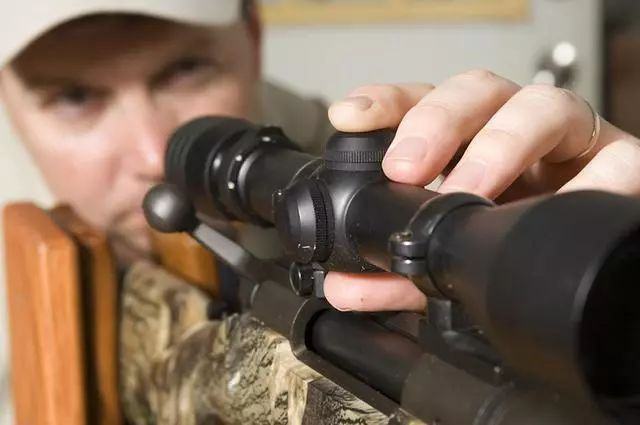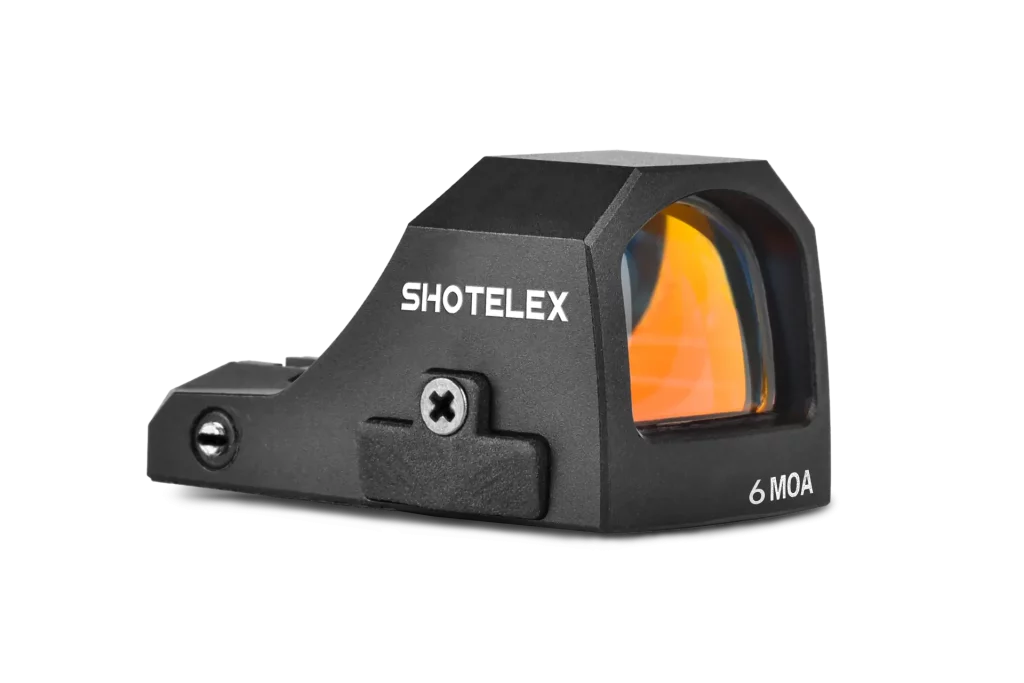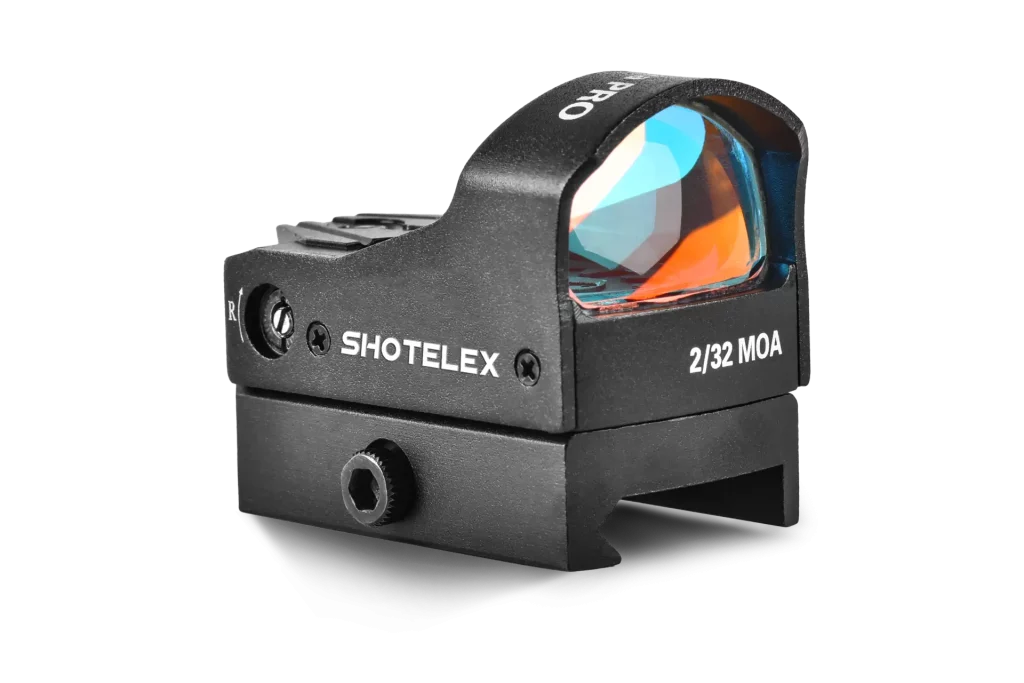How to Choose and Use the 100 Yard Rifle Hunting Scopes?
When venturing into the world of rifle hunting or competitive shooting, finding the right tool to enhance your aim and precision becomes paramount. Amongst the array of accessories that a hunter or shooter can invest in, a good quality rifle scope stands out as an essential piece of equipment. Particularly, a 100-yard scope, designed for optimized performance at medium ranges, serves as a versatile and reliable companion for a variety of purposes. In this article, we’ll delve deep into the characteristics, uses, and selection tips for 100-yard rifle hunting scopes, ensuring that by the end, you’ll be equipped with the knowledge necessary to choose the perfect scope for your next hunt or competition.

What are 100 Yard Scopes?
A 100-yard scope is a specialized rifle scope crafted to excel within the range of about 100 yards, making it particularly adept for handling medium-distance targets. These scopes boast unique features that set them apart from others, primarily in terms of their moderate magnification, objective lens size, reticle types, and eye relief, which collectively contribute to a higher degree of accuracy and usability.
Key Features of 100 Yard Scopes
- Magnification and Objective Lens Diameter
- Magnification Range: Typically ranging from 3x to 9x, these scopes offer a versatile balance between a wide field of view for quick target acquisition and higher magnification for detailed observation.
- Objective Lens Diameter: A standard 40mm objective lens diameter ensures ample light gathering capability, resulting in clear and bright images, especially in low-light conditions. This feature is particularly beneficial for early morning or late evening hunts.
- Reticle Varieties
Another distinguishing factor is the choice of reticle patterns, where the crossfire, duplex, and mildot stand out.
- Mildot Reticle: This reticle type is highly popular among hunters and shooters due to its ability to assist in range estimation and precise target acquisition. The intricate grid pattern allows for quick and accurate aiming, even on moving targets.
- Crossfire and Duplex Reticles: These classic reticle designs offer simple yet effective aiming points, making them suitable for various shooting applications.
- Eye Relief
The appropriate eye relief—a term referring to the safe distance from the rear of the ocular lens to the shooter’s eye—is pivotal in avoiding eye injury during recoil. Center-fire rifles, known for their potent kickbacks, require scopes with adequate eye relief to safeguard against any potential harm.
Uses and Applications of 100 Yard Scopes
These scopes find extensive application in two primary domains:
1. Hunting:
- Small Game Hunting: These scopes are ideal for hunting small game animals like rabbits, squirrels, and birds. Their accurate and precise aiming capabilities allow for clean and ethical shots at relatively short distances.
2. Tactical Applications:
- IPSC Competitions: 100-yard scopes are commonly used in dynamic shooting competitions like those organized by the International Practical Shooting Confederation (IPSC). They offer the necessary precision and speed for engaging targets under pressure.
- Tactical Drills and Training: These scopes are also used in tactical training and drills to simulate real-world scenarios and enhance marksmanship skills.
By understanding these key features and applications, you can select the right 100-yard scope to meet your specific hunting or shooting needs.

Features to Consider for Selecting Your Perfect 100 Yard Hunting Scope
When selecting the ideal rifle hunting scope for your needs, several factors must be taken into account to ensure optimal performance in various hunting environments. Here are the key elements to consider:
1. Magnification and Objective Lens
Higher magnification provides a smaller field of view, making it difficult to acquire targets in hunting situations quickly. A larger objective lens allows more light to enter the scope, improving low-light performance. However, larger lenses also increase size, weight, and cost.
Example: 4×20 means 4 times magnification and a 20mm objective lens; 3-9×40 means the magnification can be adjusted from 3x to 9x, with a 40mm objective lens.
2. Reticle
Common reticle types include crossfire, duplex, mildot, and BDC. Mildot reticles are further subdivided, with each two dots representing a mil. This can be useful for calculating distance and engaging moving targets with practice.
3. Eye Relief
Eye relief refers to the optimal distance your eye should be from the eyepiece to view the full sight picture clearly. For centerfire rifles, which have significant recoil, a longer eye relief is necessary to prevent the scope from hitting your eye during firing.
4. Elevation and Windage Adjustments
These adjustments allow you to dial in your scope for different distances and wind conditions. Most scopes have these adjustments under a protective cap, while some tactical scopes have exposed turrets with precise markings.
5. First Focal Plane (FFP) vs. Second Focal Plane (SFP)
SFP: The most common type, suitable for about 95% of hunting situations. The reticle does not change size when you adjust the magnification.
FFP: The reticle scales with magnification, making it easier for long-range shooting. However, the reticle can appear small and cluttered at lower magnifications, making it less ideal for close-quarters or dense forest hunting.
6. Reliability and Durability
The scope should be shockproof, waterproof, and able to withstand extreme temperatures. While light transmission and magnification are important, they are not the most critical factors. Modern optics have made significant advancements in light transmission. For most hunting scenarios, 10x magnification is sufficient. A 3-9×40 scope is often a good choice for beginners and most hunters. Heavier, higher-magnification scopes are unnecessary for most hunting situations.
Fixed vs. Variable: Fixed-power scopes are often preferred by experienced hunters and guides. Variable-power scopes (e.g., 3-9x) offer more versatility.
7. Price and Brand
Higher-priced scopes generally offer better quality and performance. However, consider your budget and specific needs. Research different brands and read reviews to find a reliable option.
By carefully evaluating these factors, you can choose the perfect rifle scope to suit your hunting style and preferences. Whether you’re a seasoned hunter or just getting started, the right scope will enhance your accuracy and enjoyment in the field.

How to Use Your 100-Yard Rifle Scope Effectively
Mastering the use of a 100-yard rifle scope is crucial for accurate and enjoyable shooting. This part will walk you through the essential steps to get the most out of your scope.
1. Mounting a Scope
- Choose a Quality Mount: Invest in a sturdy, well-fitting mount designed for your specific rifle model. A secure mount prevents movement and ensures consistent point of impact.
- Proper Alignment: Position the scope to achieve comfortable eye relief, typically around 3.5 inches. This minimizes eye strain and maximizes your field of view.
- Tighten Securely: Follow the manufacturer’s instructions to tighten the mounting screws to the recommended torque. Over-tightening can damage the scope or rifle, while under-tightening can lead to shifting.
- Check Reticle Alignment: Ensure the reticle is centered in the scope and aligned with the rifle’s bore. This guarantees accurate aiming and reduces the need for excessive adjustments during zeroing.
2. Zeroing the Scope
- Find a Stable Shooting Position: Set up at a bench or use a sturdy rest to minimize movement during the zeroing process.
- Fire a Test Group: Fire a few shots at the target to establish a baseline. Note the point of impact (POI) relative to the point of aim (POA).
- Adjust the Turrets: Use the elevation and windage turrets to move the POI closer to the POA. Make small adjustments, typically in quarter-turn increments, and fire another group of shots.
- Refine the Zero: Continue this process, making adjustments as needed, until the POI is consistently centered on the target.
- Confirm the Zero: Once you’re satisfied with the zero, fire a final group of shots to verify the accuracy and consistency of your scope.
3. Shooting Techniques
- Proper Stance: Adopt a stable shooting position, such as prone, sitting, or standing. Use a shooting bag or rest to further stabilize your rifle.
- Breathing Control: Take slow, deep breaths and exhale slowly before pulling the trigger. Hold your breath briefly at the peak of your exhale to minimize movement.
- Trigger Control: Squeeze the trigger smoothly and gently, avoiding jerking or yanking. A smooth trigger pull will prevent sudden movements that can disrupt your aim.
- Follow-Through: Maintain your sight picture for a moment after the shot to ensure a clean follow-through and avoid anticipating recoil.
4. Maintenance and Care
- Regular Cleaning: Clean the lenses with a soft, lint-free cloth and a lens cleaning solution to remove dirt, dust, and fingerprints.
- Lens Covers: Use lens caps or covers to protect the lenses from scratches and debris when not in use.
- Storage: Store your scope in a cool, dry place, away from direct sunlight and extreme temperatures.
- Avoid Harsh Chemicals: Never use harsh chemicals or solvents on your scope, as they can damage the lenses and internal components.
- Professional Service: If you encounter any issues or require advanced cleaning, consult a qualified gunsmith or scope technician.
By following these guidelines, you can effectively use your 100-yard rifle scope to achieve accurate and consistent shots. Remember, practice is key. Spend time at the range to hone your skills and build confidence in your equipment.

In Summary
Selecting the right 100-yard rifle hunting scope is a crucial decision that can greatly impact your accuracy and success, whether you’re hunting small game or participating in competitive shooting. By considering factors such as magnification, reticle design, eye relief, durability, and budget, you can find the ideal scope that matches your needs. A well-chosen scope, tailored to your shooting style and intended use, will elevate your experience and improve your results in the field.









